I want to fit a bezier curve with known end points (p0 and p3) to noisy 2d data. This seems like an easier problem than traditional 4-point bezier curve fitting but still too hard for me to figure out.
Can someone point me to existing code or an algorithm to find the best values for the control points p1 and p2?
edit: The points that I'm trying to fit with a bezier curve comes from curves drawn with a mouse (imagine drawing something with a brush in Paint, there could be hundreds of recorded points in one long stroke). The anchor points p0 and p3 are created in advance but the control points p1 and p2 should be calculated so that the bezier fits the shape of the curve sketched out with the mouse.


